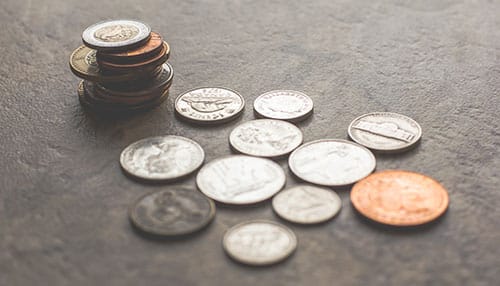FREQUENTLY ASKED TAX DEPRECIATION QUESTIONS
HOW MANY YEARS DOES A DEPRECIATION SCHEDULE LAST?
The maximum effective life of a residential building as prescribed by the ATO is 40 years, therefore our comprehensive reports last for the full 40 years. Some tax depreciation schedules will only last 10 or 20 years. However, MCG reports show the depreciation deductions from the settlement date right through to 40 years from settlement.


IS DEPRECIATION ONLY WORTHWHILE ON NEWER RATHER THAN OLDER PROPERTIES?
The short answer is no. It is correct to say that the newer a property is, the more depreciation deductions you are likely to be able to claim. However, a property will generally always attract some amount of depreciation regardless of age, unless it is a very old property in completely original condition. What we term as 'worthwhile' is returning at least twice our fee in depreciation allowances within the first full year of claim. In fact, we offer a guarantee that if we cannot at least achieve twice the fee in depreciation deductions, there is no obligation to proceed with a report. Commercial properties are best assessed on a case by case basis, and there are no general rules that can reliably be applied to commercial properties.
WHAT IS THE DIFFERENCE BETWEEN PRIME COST AND DIMINISHING VALUE METHODS OF DEPRECIATION?
The difference between the prime cost and diminishing value method is that the diminishing value method returns greater deductions over the first few years before diminishing over time. Whereas the prime cost method provides more of a flat deduction over the life of the assets. They will both provide the same total deductions over 40 years, but the diminishing value method provides higher deductions within the first 5-6 years. After around 6-7 years, the diminishing method will normally drop below the prime cost method. The decision on which method to claim is based on whether the property investor is looking for immediate deductions, or a more constant claim over the life of the property. Your accountant is the best person to recommend which method, and due to some depreciation legislation changes, your deductions may be the same regardless of the method you choose. The specific differences and a case study can be found on our blog site here.


MY PROPERTY WAS BUILT BEFORE 1987, IS IT TOO OLD TO CLAIM DEPRECIATION DEDUCTIONS?
Generally, no. However, it depends on what has been done to the property over time. Your investment property does not have to be new as both new and old properties will attract some depreciation deductions. A common myth is that older properties will attract no claim. The property must have commenced construction after the 16th of September 1987 to qualify for tax depreciation deductions on the original building structure. However, most properties built before 1987 have undergone some renovations or improvements that will qualify for deductions. In fact, our data shows that of all properties built prior to 1987, 63.8% of them have had improvements and the average value of the improvements is $39,191.
WHAT ITEMS CAN I CLAIM TAX DEPRECIATION DEDUCTIONS ON?
All ATO specified plant and equipment items and capital allowances on the building (where the building qualifies) can be claimed. Capital allowances cover the building itself such as the concrete slab, timber frame, roofing, paving, retaining walls and the like. Plant and equipment items consist of many items within a property, plant and equipment items include (but are not limited to):
* Air Conditioning
* Bathroom Accessories
* Blinds
* Carpets
* Cooktops
* Curtains
* Door Closer's
* Floating Timber Floors
* Freestanding Furniture
* Garage Door Motors & Controls
* Garbage Bins
* Hot Water Systems
* Light Shades
* Outdoor Furniture
* Ovens
* Range hoods
* Security Systems
* Smoke Alarms
* Solar Garden Lights
* Solar Power Generators
* Vinyl
The complete list of plant and equipment items for residential property can be found here. It’s important to note that from May 2017, there are changes to way plant and equipment items can be claimed.
WHAT DOES A TAX DEPRECIATION SCHEDULE CONTAIN?
Not all depreciation reports are created equal. Our depreciation report is a detailed 40 year report which includes;
1. A method statement and property overview;
2. A summary and schedule of diminishing value method of depreciation;
3. A summary and schedule of prime cost method of depreciation;
4. A complete list of all pooled items contained in the property;
5. A list of all Division 43 capital allowances available from the property;
6. A detailed 40 year summary showing the diminishing value and prime cost claims side by side;
7. A graph comparing the two methods of depreciation in order to select the most appropriate method;
8. All common property items within strata or community title complexes which the owner is entitle to claim over such as lifts, foyers, basements and all associated common plant and equipment;
9. An appendix showing any applicable plant deductions for capital loss calculations.
The report is designed to be easy to read for property investors yet detailed enough for an accountant to be able to utilise the depreciation effective lives and residual values in their preferred method. The report starts at the settlement date of the property which enables a depreciation back claim to be recouped by the investor, and shows the first year as a pro rata year finishing at the end of the financial year.
The report is compliant with ATO legislation and is prepared by MCG Quantity Surveyors as registered tax agents and members of the Australian Institute of Quantity Surveyors (AIQS) and the Royal Institute of Chartered Surveyors (RICS).
MCG will ensure that the maximum tax depreciation deductions are identified and that you as the property investor are completely satisfied with the report. We pride ourselves on our personalised service.

WHY IS MAY 2017 IMPORTANT AND WHAT HAS CHANGED WITH PLANT AND EQUIPMENT DEDUCTIONS?
On the 9th of May 2017, the Federal Government changed the rules around claiming plant and equipment items. The changes meant that if you purchased a property (exchanged contracts) after 7:30pm on the 9th of May 2017, you could only claim plant and equipment depreciation deductions if the property you purchased was brand new, or you added the asset(s) yourself such as within a renovation.
If settlement date was after this date, or if you purchased prior but the property was not income producing in the 2016/2017 financial year, then no existing plant and equipment can be claimed as depreciation.
There are some more further nuances to this legislation which you can read here, but here at MCG we’re right across it. It’s important to note that there were no changes to the division 43 allowance available on the qualifying structural allowances. If you have any questions on this or any of the above, we’re here to help!
Talk to one of our tax depreciation experts today
on 1300 795 170 to ensure you have a professional
maximising your tax depreciation deductions.
